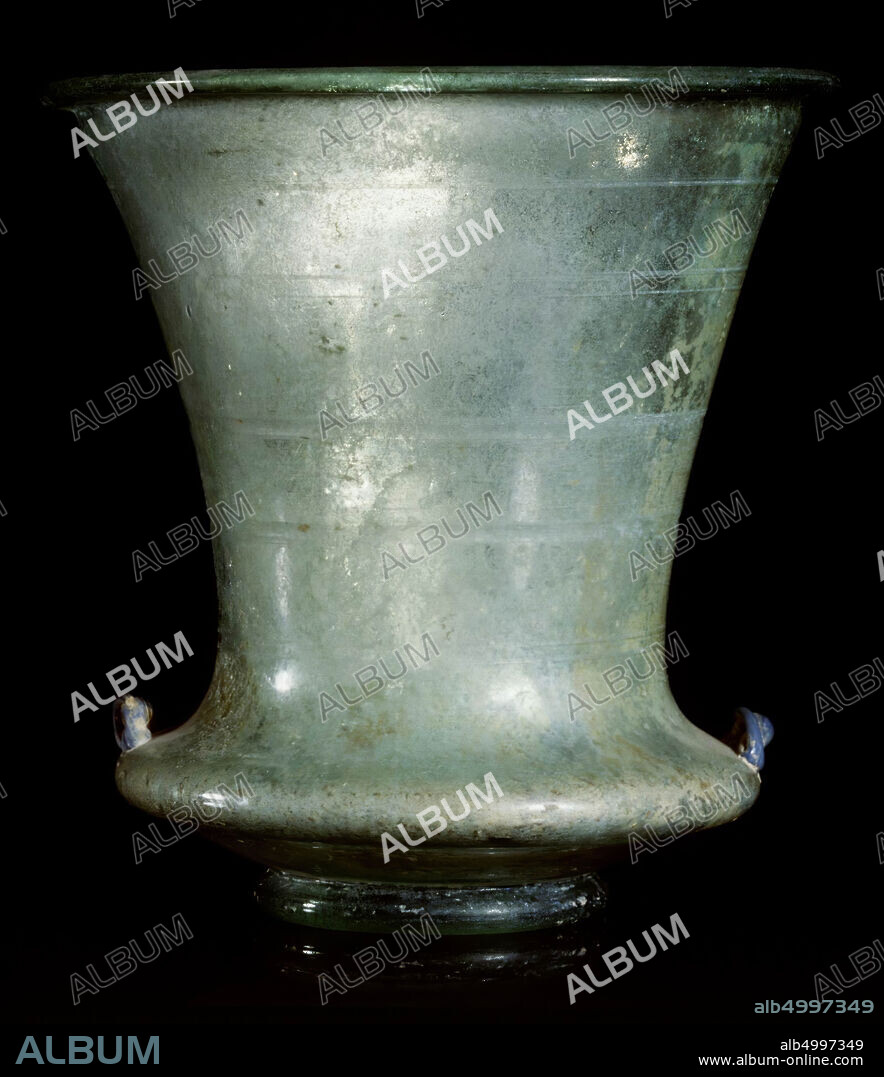alb4997349
This perfectly shaped chalice is in the tradition of the showcup, which the Romans called carchesium. The light green glass is made of extremely thin-walled. The decoration consists of mini-ears of ultramarine glass on the shoulder and some ground horizontal bands on the upper part of the carchesium. The actual vase body consists of a layer and strongly convex part, which turns into an elegantly shaped, flared chalice. The shape is at the transition point of two worlds: on the one hand the piece stands in the tradition of the Roman showcup, on the other it points to the luster of Islamic glass art, with its mosque lamps in the same shape., Crockery, chalice, glass, H 14.6 cm, D 13.7 cm, Roman Period 400-700 ad, Turkey.

|
Add to another lightbox |
|
Add to another lightbox |



Buy this image.
Select the use:

Caption:
This perfectly shaped chalice is in the tradition of the showcup, which the Romans called carchesium. The light green glass is made of extremely thin-walled. The decoration consists of mini-ears of ultramarine glass on the shoulder and some ground horizontal bands on the upper part of the carchesium. The actual vase body consists of a layer and strongly convex part, which turns into an elegantly shaped, flared chalice. The shape is at the transition point of two worlds: on the one hand the piece stands in the tradition of the Roman showcup, on the other it points to the luster of Islamic glass art, with its mosque lamps in the same shape., Crockery, chalice, glass, H 14.6 cm, D 13.7 cm, Roman Period 400-700 ad, Turkey
Credit:
Album / quintlox
Releases:
Image size:
4800 x 5562 px | 76.4 MB
Print size:
40.6 x 47.1 cm | 16.0 x 18.5 in (300 dpi)
Keywords:
ACTUAL VASE BODY CONSISTS • CARCHESIUM • CHALICE • CROCKERY • D 13.7 CM • DECORATION CONSISTS • ELEGANTLY SHAPED • EXTREMELY THIN-WALLED • FLARED CHALICE • FORMS (GEOMETRIC) • GLASS • GROUND HORIZONTAL BANDS • H 14.6 CM • HAND • HAND. • HANDS • ISLAMIC GLASS ART • LAYER • LIGHT GREEN GLASS • LUSTER • MINI-EARS • MOSQUE LAMPS • PERFECTLY SHAPED CHALICE • PIECE STANDS • POINTS • ROMAN PERIOD 400-700 AD • ROMAN SHOWCUP • ROMANS • SHAPE • SHAPES • SHOULDER • SHOWCUP • STRONGLY CONVEX PART • TRADITION • TRADITIONAL • TRADITIONS • TRANSITION POINT • TURKEY • TURNS • TWO WORLDS • ULTRAMARINE GLASS • UPPER PART
 Pinterest
Pinterest Twitter
Twitter Facebook
Facebook Copy link
Copy link Email
Email
